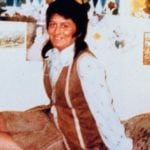 Weird Stuff
Weird Stuff  Weird Stuff
Weird Stuff  Mysteries
Mysteries 10 Tragic Disappearances and Deaths in Joshua Tree National Park
 History
History 10 Ways Childhood Really Sucked in the Old West
 Music
Music 10 Name Origins of Famous Bands from the 1990s
 Religion
Religion 10 Biggest Turnarounds by the Catholic Church
 Weird Stuff
Weird Stuff 10 Unbelievable Times Laws Had Unintended Consequences
 Humans
Humans Ten Historic Women Who Deserve Way More Credit Than They Got
 Movies and TV
Movies and TV 10 Films That Spawned Major Lawsuits
 History
History Ten Times Towns Were Wiped Off the Face of the Earth
 Creepy
Creepy 10 of the Most Disturbingly Haunted Public Houses in the UK
 Weird Stuff
Weird Stuff 10 Niche Subcultures That Are More Popular Than You Might Think
 Mysteries
Mysteries 10 Tragic Disappearances and Deaths in Joshua Tree National Park
 History
History 10 Ways Childhood Really Sucked in the Old West
Who's Behind Listverse?

Jamie Frater
Head Editor
Jamie founded Listverse due to an insatiable desire to share fascinating, obscure, and bizarre facts. He has been a guest speaker on numerous national radio and television stations and is a five time published author.
More About Us Music
Music 10 Name Origins of Famous Bands from the 1990s
 Religion
Religion 10 Biggest Turnarounds by the Catholic Church
 Weird Stuff
Weird Stuff 10 Unbelievable Times Laws Had Unintended Consequences
 Humans
Humans Ten Historic Women Who Deserve Way More Credit Than They Got
 Movies and TV
Movies and TV 10 Films That Spawned Major Lawsuits
 History
History Ten Times Towns Were Wiped Off the Face of the Earth
 Creepy
Creepy 10 of the Most Disturbingly Haunted Public Houses in the UK
10 Creepy Serial Killers Of The 19th Century
The terms “serial killer” and “psychopath” are relatively new ideas. Unfortunately, the act of killing is not a new pastime. The 19th century has seen some serial killers of baffling repute, especially considering the fact that at that time, police were still developing new ways of linking deaths to each other and to a specific killer—methods that are commonplace today. Jack the Ripper was by no means the only killer stalking the streets at this time, and in fact, his attributed body count is positively low by the standards of these murderous men and women.
10 William Palmer
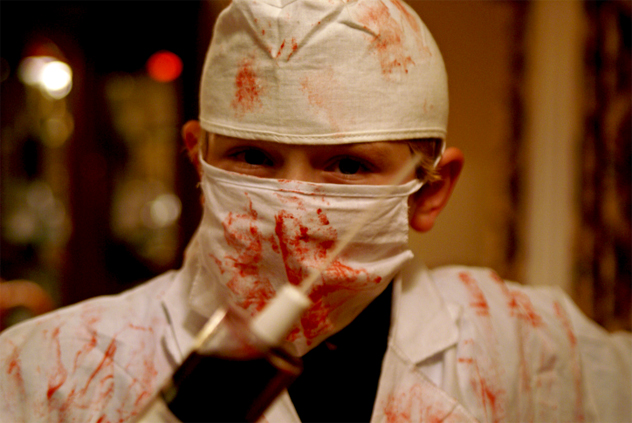
Dr. William Palmer became known as the Rugeley Poisoner by the end of his trial in 1856, and his hanging at Stafford Prison, England, attracted a crowd of more than 30,000 people. Not all thought this womanizing doctor was guilty as charged, however—some people thought he was just an unlucky man judged on his lifestyle rather than his alleged crimes. Ultimately, Palmer was found guilty and executed for the murder of John Parsons Cook via strychnine poisoning, but it was thought that there were many, many more victims.
A London-trained doctor with a lifelong interest in poisons, Palmer’s patients had a habit of dying. It was only in 1846 that the first truly suspicious death occurred, that of a plumber who died after winning a bet with the doctor as to who could drink more brandy in a sitting. It was determined that the victim had tuberculosis, though, and the death was ruled as natural causes. Palmer married not long after, and soon found his despised mother-in-law moving in with him. She died within a few weeks. Then, Palmer’s five children all died within a handful of months of being born. Next was his wife—supposedly, she died of cholera, and it was overlooked as coincidence that Palmer had taken out a life insurance policy on her shortly before her death. Next was Palmer’s brother, and the good doctor cashed in on that insurance policy, too.
The death that he was eventually executed for happened in 1855, a little over a year after his wife’s death. Palmer and his friend, John Parsons Cook, bet on some horses. Cook won the then-unimaginable sum of £3,000, while Palmer lost. They retired to the hotel to celebrate, and Cook was dead the next morning. A postmortem returned a verdict of willful death, and as Parsons had been seen purchasing strychnine just before, he was arrested, tried, and hanged.
Get inside the heads of history’s most depraved humans with Serial Killers: The Method and Madness of Monsters at Amazon.com!
9 Felipe Espinosa

With the end of the Mexican-American War in 1846, countless families were left suffering from the loss of their family lands as well as the necessity of suddenly having to adapt to American ways. Felipe Nerio Espinosa and his brother, Jose Vivian, were among those who had been promised that they would be able to keep their family’s lands after the war. In the end, more than two-thirds of the families in New Mexico lost their lands and homes, with the Espinosa brothers among them. Forced to move to Colorado with their families, they first turned to robbery to try to support themselves. They were recognized robbing a freight wagon train, and later shot and killed an Army corporal when evading arrest.
The authorities seized all gains that the brothers had passed along to their families, and when Felipe and Jose found out, they declared war on the United States. By the time Jose was shot and mortally wounded in May of 1863, they had killed seven people. Felipe regrouped with his family and recruited them to his cause; however, with the help of a Native American tracker, Felipe and his nephew, Jose Vincente, were found by authorities, shot, and beheaded. The two brothers came to be known as America’s first serial killers.
8 Mark Jefferies

Mark Jefferies is one of the most notorious criminals in Australia’s colonial history. Originally from Scotland, Jefferies was taken to a penal colony on what was then called Van Diemen’s Land (modern-day Tasmania). He soon broke out of Macquarie Harbor, accompanied by several other inmates from the prison. For the first few days of their escape, they survived on what animals they could hunt and kill. When food got scarce, though, they drew lots to decide which one of them was to be killed and eaten first. A man named Russell lost, and was immediately shot and consumed. They carried the meat with them for a while, but abandoned the leftovers when they came across some sheep.
In the time he was on the run, it was confirmed that Jefferies killed four adults, including a constable, and at least one baby. The baby belonged to the Tibbs family; after shooting the husband, Jefferies and his fellow fugitives abducted the wife and five-month-old child. When she later returned to the homestead in a state of panic and despair, she told authorities that her baby had been murdered. His body was later recovered. Jefferies and his cohorts—who were said to be disgusted by his behavior—were eventually captured, tried, and hanged in 1826.
7 Manuel Blanco Romasanta

Manuel Blanco Romasanta is a serial killer from Spain who went on trial in 1853. Using the old, “I couldn’t help it, I was a werewolf,” defense isn’t something entirely new, but in this case, he had a few things backing him up. Romasanta was accused of killing nine people, and then of removing the fat of the victims to sell as an ointment. Eventually he was found guilty, and his claims that he was suffering from lycanthropy were somewhat helped by the fact that some of the victims credited to him were said to have been killed by actual wolves. Romasanta was never executed for his crimes, however, as a Dr. Phillips, who was said to have hypnotized Romasanta and found signs of true lycanthropy, requested he be allowed to live as long as he would subject himself to further study.
Any traces of those further studies have been lost, and it’s even up for debate as to just who this doctor was. But there may have been something more to Romasanta’s claim. On his birth certificate, his name is Manuela Blanco Romansanta, and he was raised for some time as a girl. Now, it’s thought that he may have been suffering from female pseudohermaphroditism, or intersex. This disorder occurs when the internal sex chromosomes and the external genitals don’t match; in Romasanta’s case, he would have been a female fetus exposed to male hormones before fully developing. At the onset of puberty, the individual is faced with conflicting and confused hormonal imbalances, which can result in irrational aggression. Ultimately, Romasanta died of stomach cancer in prison in 1863.
6 Francisco Guerrero
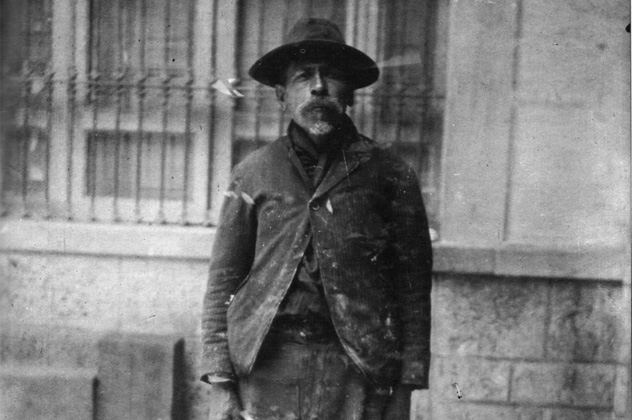
Francisco Guerrero’s reign of terror started in Mexico City in the late 1880s. In 1890, he was convicted of the rape and murder of several area women in the first of his two murder trials. Guerrero, a shoemaker by trade, had a violent past that was unmasked during this first trial. His mother abandoned her first husband to marry his father, who was also her cousin. Born in 1850, he had witnessed a murder by the age of seven and he himself suffered from epilepsy, brought on by a blow to the head with a butcher knife. One of his first jobs was in a slaughterhouse, where he delighted in watching the blood flow from the slit throats of animals.
Guerrero married in 1875, but his wife and six children didn’t keep him off the streets and out of the beds of Mexico City’s prostitutes. By 1881, his encounters with prostitutes weren’t enough, and he began assaulting them. He was tried and convicted in 1890 and given the death penalty for the rape, assault, and murder of two women. He was spared, however, and was released in 1905. By 1908 he was on trial again, this time for the murder of an elderly woman. Guerrero died soon after.
5 Anna Maria Zwanziger

Anna Maria Zwanziger started her habit of poisoning and killing relatively late in life. She was nearly 50 years old when she became the housekeeper of Justice Wolfgang Glasser in 1808. Glasser was separated from his wife and took Zwanziger, then going by the name Nanette Schonleben, as his housekeeper. Eventually he was reconciled with his wife, and returned to her. Not long after, the previously healthy woman was overcome with violent gastrointestinal distress and died. Zwanziger moved on. Her next employer fell victim to a similar illness, as did the one after that. Fellow servants that she had disagreements with would fall mysteriously ill. Finally, when the Gebhard family realized that they were being plagued with illness and released her, she poisoned their five-month-old child with arsenic as a farewell.
It was that poisoning that finally caused the family to speak with others who had visited them and taken ill, and to track her record of mysterious deaths and illnesses. Bodies of previous victims were exhumed, and the cause of death was nearly always arsenic. Eventually brought to trial, it came out that she ingratiated herself with her employers, then killed them in an attempt to secure her own retirement. She was quoted as saying, “I said to myself, I must make my old age comfortable, and if the poison does not do her business this time, why, I will give it to her again till it does.” She was sentenced in 1811 to be beheaded.
4 Andrew Bichel

Andrew Bichel was arrested in 1808 for the murder of at least two women, although he was believed to have killed many more. A fortune teller in Regensdorf, Bavaria, Bichel made it known that he was looking to hire a servant girl. Girls would come to him looking for employment, and at the end of the interview, Bichel would tell the girls that he would give them their fortunes.
According to Bichel, he would have the girls blindfolded with their hands tied behind their backs—better to read their fortunes—when he would proceed to stab them. The driving force and motivations in his killings was a fetish for women’s clothing. Although only two bodies were discovered, there were several chests full of women’s clothes also found in his house when he was finally arrested.
Click here to start watching your favorite HBO shows with Amazon Prime Instant Video! Enjoy a 30 day free trial at Amazon.com!
3 John Rulloff

Arguably one of America’s most bizarre serial killers, John Rulloff was known as the “learned murderer” in his day. According to him, he knew 28 different languages, and possessed the knowledge of a physician, carpenter, lawyer, and draughtsman. For all his supposed knowledge, he still ended up being the last person hanged in New York State, dying at 11:40 on the morning of May 18, 1871.
In 1843, Rulloff married a woman named Harriet, and two years later they had a daughter. There was a long-standing grudge between Rulloff and his brother-in-law, Will, but Will still asked for Rulloff’s help when his wife and newborn daughter grew gravely ill. Both died, and within a few weeks of the funerals, Rulloff disappeared with his own wife and daughter. Friends and neighbors were suspicious, as they already knew Rulloff was an extremely abusive husband. He returned several months later, surprised at the theories and insisting that his wife and child were alive and well, and living near Cayuga Lake. He was still arrested, and the body of his sister-in-law was exhumed. When copper was found in her system, Rulloff was put on trial.
Since the bodies of Rulloff’s wife and daughter were never found, the resulting series of trials were long and drawn out. Eventually, he served a sentence and escaped with the help of a jailor’s son he had befriended. Rulloff, his young friend, and a thief he had met in jail went on to rob a dry goods store, ending in the death of a clerk and of his two accomplices. It was this crime that he was eventually hanged for.
The term “psychopath” hadn’t been coined yet, but this was about the time criminologists were starting to build profiles of serial murderers. Many people doubted that Rulloff was guilty of his crimes because of his friendly demeanor and his scholarly learning. In retrospect, Rulloff showed all the characteristics of a charismatic, charming psychopath; in his day, however, that was all evidence of his innocence. So at odds with his deeds were his manners that his brain was saved, pickled, and can still be seen at Cornell University.
2 Sarah Freeman

Sarah Freeman was born in Somerset in 1817. By the time she was 18 years old, she had not only left school, but had two illegitimate children. Her disruptive and aggressive behavior got her kicked out of her hometown, so she moved to Bridgewater to become a prostitute. It was in Bridgewater that she married Henry Freeman, who would become her first victim (although the murder was never officially proven). Sarah received £20 from Henry’s death, and promptly packed up and moved to London. But as the money soon ran out, she quickly returned to her family in Shapwick.
Soon after, both her parents died mysteriously, followed by her brother after he announced that he was going to marry and move Sarah out of the family cottage so his new bride would have a place to live. Soon, he was dead as well. With his death, the bodies of her earlier victims were exhumed and were ruled as deaths by arsenic poisoning. The resulting trial was huge, and 11,000 people saw her hanged on April 23, 1845.
1 Sweeney Todd

With the relatively recent release of several versions of Sweeney Todd: The Demon Barber of Fleet Street, crime historians have begun looking into the idea that there was some truth to the legend of a killer barber who operated in Victorian London’s Fleet Street. According to crime historian Peter Haining, there really was a Sweeney Todd who was born in Stepney on October 26, 1756, and was hanged for murder on January 25, 1802. Haining has found reports in The Newgate Calendar (a five-volume book that recounts the stories of criminals who were held in Newgate Prison) that tell of Todd’s short-lived childhood at the hands of alcoholic parents, an apprenticeship at a cutler, and an adolescence spent in and out of jail on theft charges.
Once out of jail, Todd was said to have set up shop next to St. Dunstan’s Church on Fleet Street, where he found a grotesque delight in the surgical duties that went along with being a barber—as well as in the way victims proffered their throats to his razor. The story of a murderous barber who disposed of body parts with the help of a local piemaker was also documented by Joseph Fouche, who served as the Minister of Police in Paris from 1799 to 1815. Like most of the documentation associated with Sweeney Todd, the veracity is unconfirmed.
Others insist that Sweeney Todd is pure fiction, a creation of the penny-dreadfuls of the era. Even those who have spent years researching the story and trying to gather evidence on whether or not Sweeney Todd was a real person aren’t entirely sure of his existence; certainly there is, at the very least, some kernel of truth in the story of the Demon Barber.
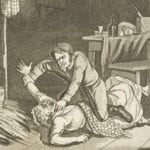
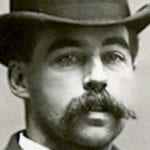



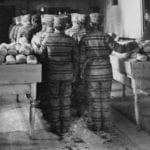

![10 Creepiest Photos Of Victims Taken By Serial Killers [DISTURBING] 10 Creepiest Photos Of Victims Taken By Serial Killers [DISTURBING]](https://listverse.com/wp-content/uploads/2018/09/Regina-Kay-Walters-featured-2-150x150.jpg)
